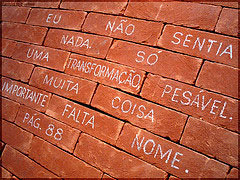Brazilian Portuguese Website Localization and E-Business
With nearly 50 million Internet users and an Internet growth rate of 9%, Brazil is an e-Commerce market that is hard to ignore. Brazil is another cornerstone of BRIC, the acronym for Brazil, Russia, India and China. BRIC represents the four largest economies outside the OECD (Organisation for Economic Co-operation and Development). If the BRICs were to set aside one-sixth of their reserves, they could create a fund the size of the International Monetary Fund (IMF). Brazil is the largest and fastest growing economy in South America.
If you wish to be successful selling your products or services on-line to the highly strategic Brazilian marketplace, there are many factors to consider, from cultural and linguistic to consumer preferences. This blog post will provide highlights on understanding Brazilian consumer behavior and cultural values in order to achieve optimum Brazilian Portuguese website translation.
Brazilian Market Statistics

- The retail sector of Brazil is considered the largest in Latin America and has continued to expand rapidly since 2004.
- Brazil is the fifth largest country in the world and seventh largest in terms of Internet usage.
- The majority of Internet users in Brazil are from the upper and upper-middle classes.
- Television is the most popular type of media in Brazil as it is less expensive than other types of media, including magazines and newspapers. Television viewing is considered a leisure activity.
- The government has been working on digital inclusion programs, such as funding Internet cafés, to help the lower income groups gain access to the Internet.
Insight into Brazilian Consumer Values
- Vanity: Brazilians place high value on appearance. “Looking good” is an integral and important aspect of Brazilian culture.
- National Goods: Whenever possible, Brazilians prefer to purchase products made within their own country.
- Frugality: Brazilians prefer saving money for larger purchases, such as a house; they often look for a “deal” when purchasing other items.
Brazilian Consumer Purchase Decisions
- Women: The decision-making power of women in Brazil has increased, which has resulted in many companies tailoring products and services to the interests and needs of Brazilian women.
- Price: Brazilians will often choose a product based on the price of the product, looking for the least expensive or the best value that they can find. Brazilian consumers often shop on budgets.
Brazilian Portuguese Language
- Diacritics: These marks, placed above or below letters usually represent vowel sounds or other modifiers.
- Verb Tense: There are several verb tenses in Brazilian Portuguese that differ from European Portuguese, including você and seu.
- Pronouns: The use of pronouns in Brazilian Portuguese is different than those of European Portuguese and the usage depends on the sentence and the use of possessive pronouns.
Portuguese is considered a Romance language like French and Italian. Brazilian Portuguese, a dialect, is the official language of Brazil and is spoken by 154 million people. The Brazilian Portuguese dialect has been influenced by the languages that it displaced in Brazil, primarily in terms of vocabulary, but also in phonology and grammar. There are words that are used today in the Brazilian Portuguese language that originated from the native Tupi-guarani and West African Yoruba languages.
Unlike other Romance languages, Portuguese has maintained the stressed vowels of Vulgar Latin which make it unique. In addition, the Brazilian Portuguese language is written using the Latin alphabet and utilizes several accent marks. These include the circumflex accent, the grave accent, the tilde, the cedilla and the dieresis mark. There are also spelling differences between European and Brazilian Portuguese languages. Some examples of the differences in spelling and writing varieties are
European and Brazilian Portuguese Spelling Differences
| European Portuguese | Brazilian Portuguese |
|---|---|
| Acção | Ação |
| Óptimo | Òtimo |
| Actual | Atual |
| Equipa | Equipe |
| Ecrã | Tela (ou display) |
| António | Antônio |
For more information, check our blog post: Top Challenges with Brazilian Portuguese Translations.
Brazilian Cultural Considerations for Website Translation and Localization
- Collectivism: Brazil is a collectivist culture. Brazilian websites may be culturally customized by emphasizing collective themes like family and community. For example, Häagen-Dazs has a section entitled, “Imprensa” which features pictures of Brazilian customers enjoying Häagen-Dazs at their own social gatherings.
- Masculine – Feminine: Brazil is a masculine culture. There are numerous ways that masculinity can be depicted on a Brazilian website, including placing an emphasis on achievement, success, product durability, as well as adventure and fun.
- High-Low Context: When customizing a site for a high-context culture like Brazil, elements like harmony and aesthetics should be considered. For example, LG emphasizes harmony on their website in their choice of colors and images. Furthermore, on their Brazilian website LG has a special multimedia section on “experience LG”. This interactive section enables Brazilian consumers to choose different multimedia commercials and advertisements for a unique experience.
Brazilian Cultural Correctness: Images and Color
There are many Brazilian symbols and icons that carry special cultural meaning for Brazilian culture. It is important to be aware of them to avoid inappropriate imagery or major cultural blunders.
- The Fig: This is a good luck sign that is made by placing the thumb between the index and middle fingers while making a fist. It is also considered a national symbol of Brazil.
- Handkerchiefs: In Brazilian culture, handkerchiefs symbolize grief and mourning, especially when handed to a person.
- Owls: If an owl circles a walking person directly overhead, it is considered a bad omen.
- Vulgar Symbols: The “OK” sign, made by a circle of the first finger and thumb, is considered a vulgar symbol.
- Purple: The color of mourning
- Black: The color of mourning, grief or formality.
- Red: Strength, reliability, happiness and prosperity.
Brazilian Search Engine Marketing and Optimization
A Brazilian search engine marketing campaign should be multi-dimensional, including not only localized organic search content, but also localized pay-per-click (PPC) campaign advertisements. Furthermore, Brazilian Portuguese landing pages can be a useful tool in an overall Brazilian SEM strategy.
Long-term search engine marketing plans should include the use of Brazilian Portuguese keywords and English keywords. Brazilian Portuguese may be the primary language of business in Brazil, but many Brazilian Internet users continue to also visit English language websites for content.
The top level website domain in Brazil is .br. Other domains that are popular in Brazil are .com, .org, .net, .info, and .biz. It is advisable to have a Brazil-based legal representative when a non-Brazilian company decides to obtain a local domain, such as .com.br. The domain needs to be registered at registro.br.
For more information about global search engine marketing and optimization, please check our services Global Search Engine Optimization.
More Resources on Brazilian Portuguese Translation
When localizing your Brazilian website into Portuguese language, it is important to research cultural and linguistic issues for the specific market that you are targeting. Keyword list localization is a very different process from standard translation; you should ensure that your SEM and/or Localization Agency has the experience and understands the requirements for performing this service so that they can provide you with appropriate localized Brazilian Portuguese keywords. This will ensure that your Brazilian Portuguese content is optimized for Brazilian search engines and will produce maximum results.
Globalization Partners International has created a more extensive overview of website globalization for Brazilian consumers in a white paper, Website Globalization and E-Business Brazil, which is available via a free download.
